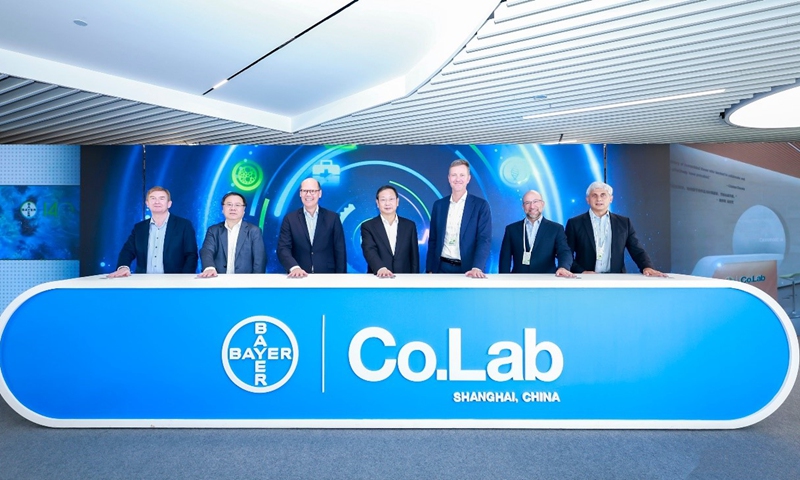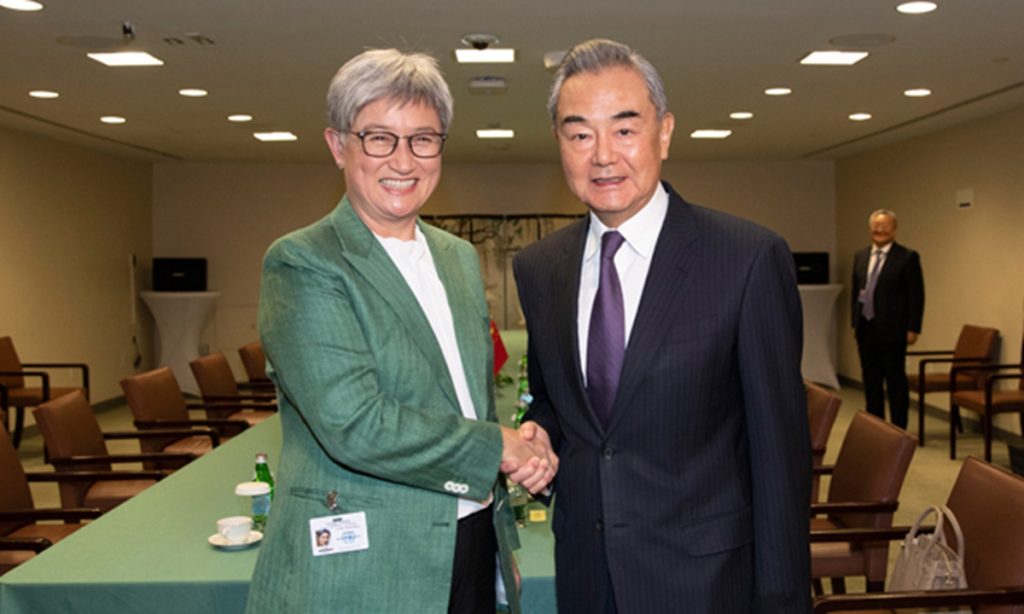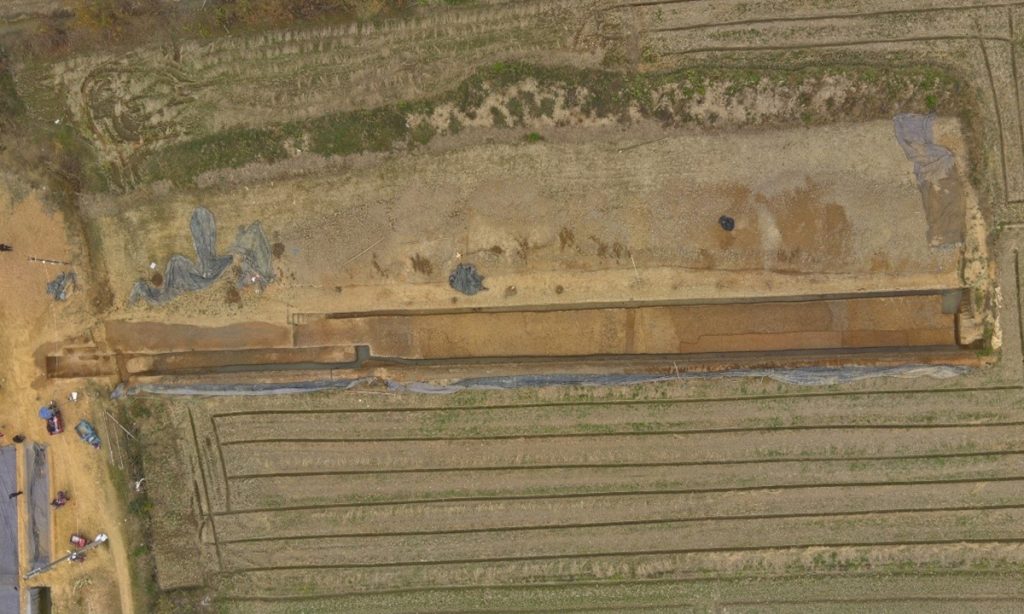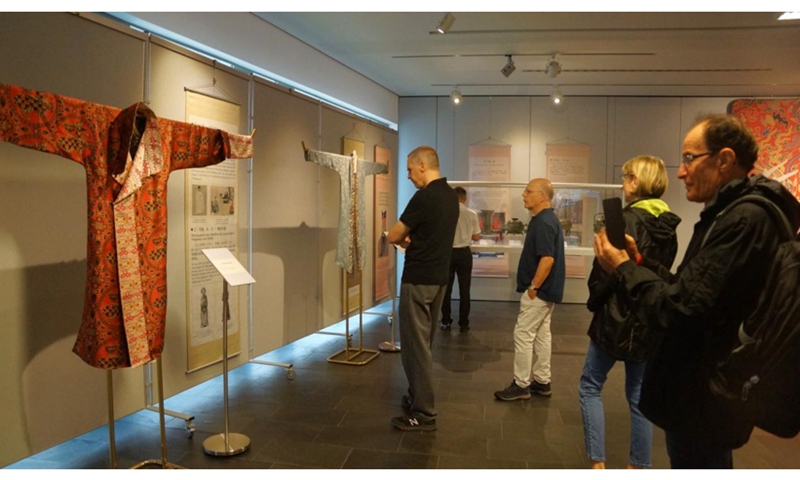Bayer builds 'double engine' to drive innovation throughout the full chain of China's biomedical industry

As the world's second-largest and one of the fastest-growing economies, China has a vibrant and vast market, and continues to provide new opportunities for the world through new developments. As China continuous to develop, its biomedical industry is undergoing an important phase. Strategic opportunities are attracting more multinational pharmaceutical companies to expand their footprint in China, demonstrating the strong pull of the country's market. Following Bayer's first innovation center's establishment in Beijing in 2023, Bayer Co.Lab China, a global life sciences co-creation platform, celebrated its grand opening in Shanghai on September 26. At this point, Bayer's "innovation double engine" in China's cutting-edge life sciences sector has been officially completed, giving the Chinese market a "vote of confidence" with its actions, marking a new step forward in Bayer's innovation strategy in China.
Guests unveiled Bayer Co.Lab China, from left: Friedemann Janus, Senior Vice President, Head of Regional Business Development & Licensing, Co.Lab and Divestitures, Pharmaceuticals Division at Bayer; Wu Qiang, Member of the Standing Committee of the CPC Pudong New Area Committee, Deputy Governor of Pudong New Area, and Deputy Director of the China (Shanghai) Pilot Free Trade Zone Administration; Sebastian Guth, Chief Operating Officer of Bayer Pharmaceuticals; Zhu Zhisong, Member of the Standing Committee of the CPC Shanghai Municipal Committee, Secretary of the CPC Pudong New Area Committee, and Director of the China (Shanghai) Pilot Free Trade Zone Administration; Juergen Eckhardt, Head of Business Development, Licensing and Open Innovation at Bayer AG's Pharmaceuticals Division; Seth Ettenberg, President and Chief Executive Officer of BlueRock Therapeutics; and Gustavo Pesquin, Chief Executive Officer of AskBio.
The "Bayer Yizhuang Open Innovation Center" aims to deepen the integration of production, academics and research. It seeks to accelerate pioneering fields of the biomedical industry, such as cell and gene therapies, and help upgrade the local biopharmaceutical industry. As part of Bayer's global strategic innovation ecosystem, the Bayer Co.Lab co-creation platform will provide exclusive space and tailored support services for Chinese startups, promote open innovation and collaboration in the biotech ecosystem and play an important part of Bayer's efforts to promote local R&D and innovation throughout the whole chain. Bayer Co.Lab China will empower eight to 10 start-ups, focusing on state-of-the-art innovations, including cell and gene therapies, oncology and new technology platforms. Previously, Bayer Co.Lab has been strategically deployed in innovation hotspots around the world, such as the United States, Japan and Germany.
Open collaboration empowers source innovation in whole chain
Bayer Co.Lab China relies on the dominant position of China's local pharmaceutical industry cluster and the resources of the whole industry chain. It is located in Shanghai Innovation (SH-INNO), which hosts first-class universities and top scientific research institutions. With the open, shared and collaborative innovation of the industrial ecosystem around SH-INNO, Bayer Co.Lab will provide end-to-end full-chain support for residents, helping local companies improve their sci-tech innovation-sourcing capabilities in advanced areas, such as cell and gene therapies, and empower local innovation.
Co.Lab China will not only provide an ideal co-creation space for residents but will also leverage Bayer's global R&D network and expertise to help biotech startups connect to a global innovation collaboration network, providing international perspectives and resources. Bayer Co.Lab China hosts a wealth of internal and external expert resources to accelerate innovation transformation through professional guidance and consultation. As an important component of Bayer's open innovation strategy, Co.Lab China will not only inject new momentum into Bayer's global R&D and innovation but also will become an important window for the globalization of China's innovation.
"China has become an important source of innovation in global life sciences," said Juergen Eckhardt, Head of Business Development, Licensing and Open Innovation at Bayer AG's Pharmaceuticals Division. "We are honored to bring the Bayer Co.Lab platform to China, and we hope that through multiparty collaboration, we can quickly identify and drive early-stage innovations to jointly explore solutions to major health problems and unmet medical needs, so that more ideas can be put into practice in China."
Expand footprint, dive into innovation and development of China's pharmaceutical industry
Bayer has long regarded the Chinese market as one of the most resilient growth engines in the world. With more than 140 years of experience in China, Bayer has continued to expand its innovation footprint. In 1995, Bayer Pharmaceuticals established a production and packaging plant in Beijing - the company's first of its kind in China - and continued to invest heavily in expansion, greatly increasing the Beijing site's production capacity. In 2009, Bayer established a global R&D center for prescription drugs in Beijing. Through this R&D center, China is included in more than 80 percent of Bayer's pivotal multicenter clinical trials, including early and late-stage clinical development programs. After nearly 30 years of development, Bayer is the only biomedical company in Beijing with an output value exceeding 10 billion yuan ($1.42 billion) for 11 consecutive years. It is also one of the few foreign-funded enterprises in Beijing that has both a "world-class product supply center" and a "global R&D center".
In addition, by deepening its strategic partnerships with well-known local academic institutions, especially Tsinghua University and Peking University, Bayer is committed to accelerating the transformation of basic research results into new drug R&D, and helping to improve China's pharmaceutical R&D and innovation capabilities. To date, Bayer has carried out more than 100 joint research projects with these two universities. These partnerships have become a model of collaborative development and innovation of "industry-university research" in China's domestic pharmaceutical and medical sectors.
The scale of China's biomedical market ranks second in the world, and the pipelines of pharmaceutical innovation ranks among the top of the world's second echelon. Its drug research and industrial development are entering a new stage of innovation and are consequently leapfrogging. As for cell and gene therapies, oncology and other innovative areas, China has shown great potential and innovative vitality, and occupies an increasingly important position in the global pharmaceutical industry chain.
Based on a deep understanding of China's pharmaceutical innovation potential and a strong recognition of local innovative forces, Bayer's Co.Lab's growth in China marks another major move by Bayer to increase its investment in innovation in the country, demonstrating its firm determination to take root in the Chinese market. Bayer will continue to enhance local collaboration to accelerate innovation and co-creation in China, work with more local companies to promote innovation and development in the medical and health industry in China and even the world, further stimulate the innovative vitality of China's pharmaceutical industry and attain a stronger footing in the global pharmaceutical innovation stage.
#
About Bayer
Bayer is a global company with core competencies in health and agriculture in the life sciences sector. The company is committed to helping people and the planet thrive through products and services that help people overcome the major challenges posed by a growing and aging global population. Bayer is committed to driving sustainability and making a positive impact on its business. At the same time, the Group is also improving profitability and creating value through technological innovation and business growth. Globally, the Bayer brand stands for trustworthiness, reliability and quality. In fiscal 2023, Bayer will have approximately 100,000 employees and sales of 47.6 billion euros. R&D investment, excluding special projects, amounted to EUR 5.8 billion. See www.bayer.com for more information.







